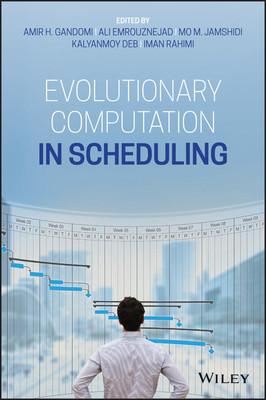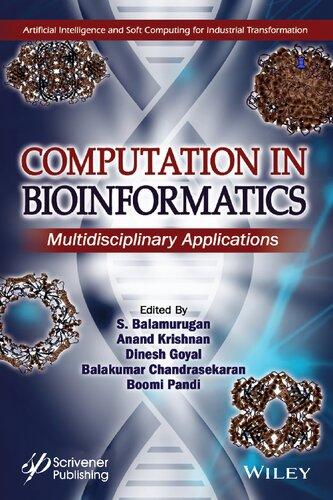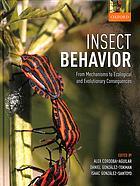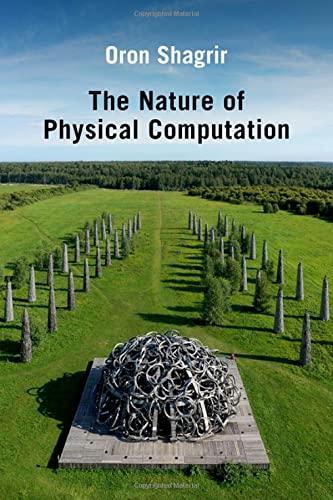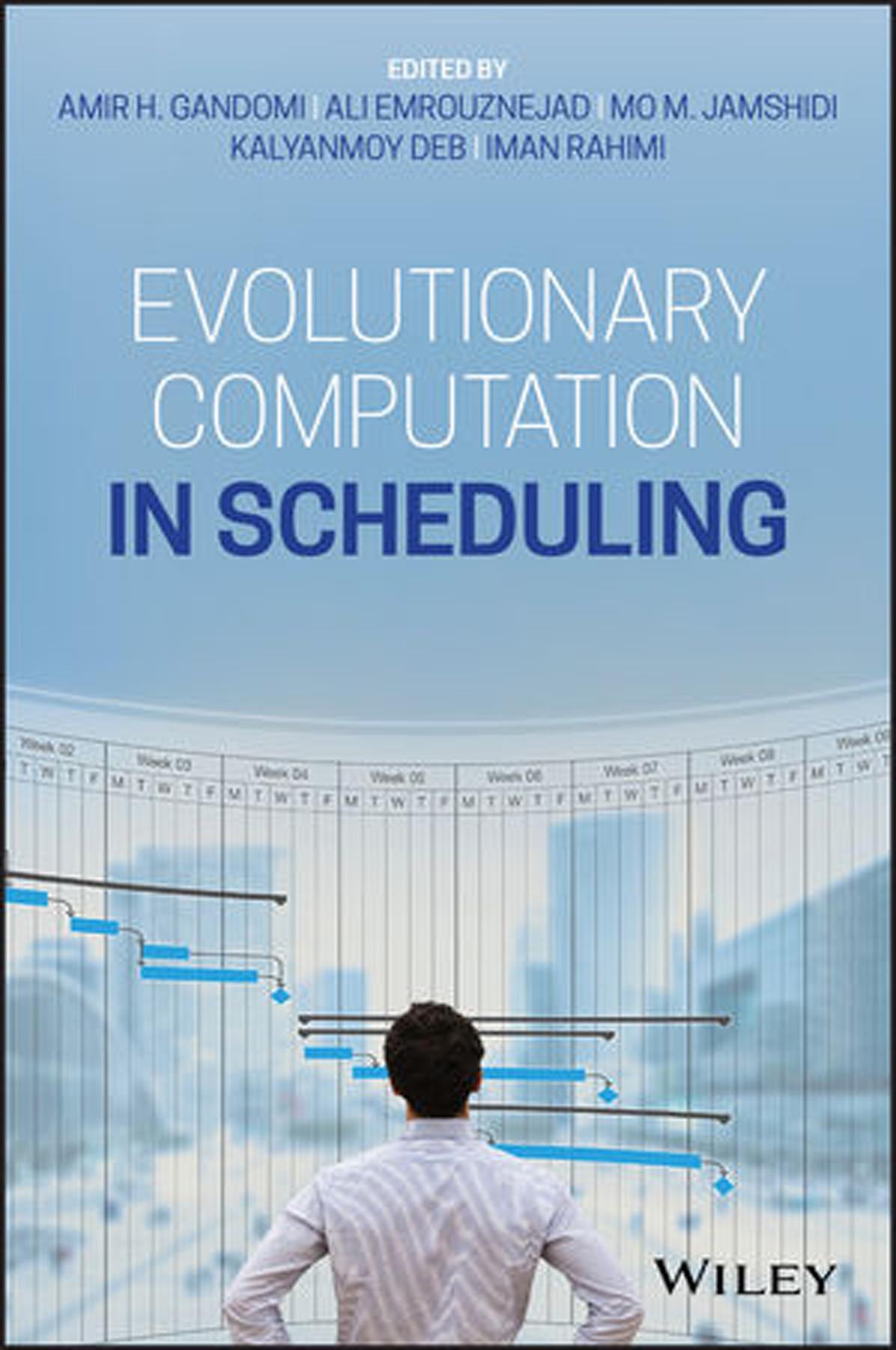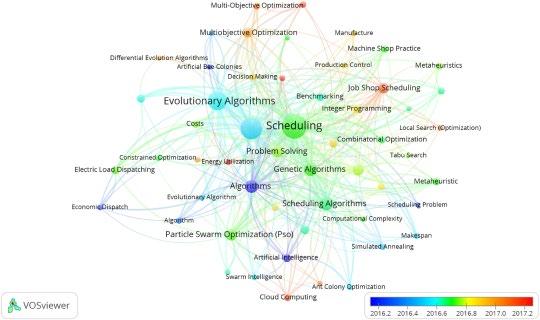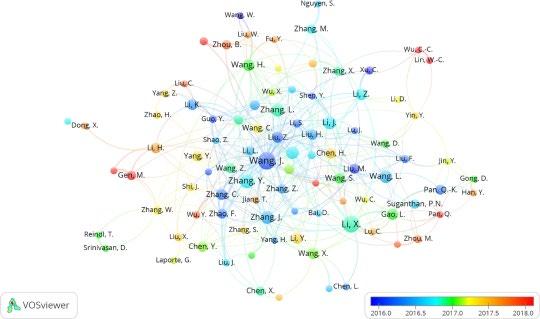Evolutionary Computation in Scheduling
Edited by
Amir H. Gandomi, Ali Emrouznejad,
Mo M. Jamshidi, Kalyanmoy Deb, and Iman Rahimi
This edition first published 2020 © 2020 John Wiley & Sons, Inc.
All rights reserved. No part of this publication may be reproduced, stored in a retrieval system, or transmitted, in any form or by any means, electronic, mechanical, photocopying, recording or otherwise, except as permitted by law. Advice on how to obtain permission to reuse material from this title is available at http://www.wiley.com/go/permissions.
The right of Amir H. Gandomi, Ali Emrouznejad, Mo M. Jamshidi, Kalyanmoy Deb, and Iman Rahimi to be identified as the the editorial material in this work has been asserted in accordance with law.
Registered Office
John Wiley & Sons, Inc., 111 River Street, Hoboken, NJ 07030, USA
Editorial Office
111 River Street, Hoboken, NJ 07030, USA
For details of our global editorial offices, customer services, and more information about Wiley products visit us at www.wiley.com.
Wiley also publishes its books in a variety of electronic formats and by print‐on‐demand. Some content that appears in standard print versions of this book may not be available in other formats.
Limit of Liability/Disclaimer of Warranty
While the publisher and authors have used their best efforts in preparing this work, they make no representations or warranties with respect to the accuracy or completeness of the contents of this work and specifically disclaim all warranties, including without limitation any implied warranties of merchantability or fitness for a particular purpose. No warranty may be created or extended by sales representatives, written sales materials or promotional statements for this work. The fact that an organization, website, or product is referred to in this work as a citation and/or potential source of further information does not mean that the publisher and authors endorse the information or services the organization, website, or product may provide or recommendations it may make. This work is sold with the understanding that the publisher is not engaged in rendering professional services. The advice and strategies contained herein may not be suitable for your situation. You should consult with a specialist where appropriate. Further, readers should be aware that websites listed in this work may have changed or disappeared between when this work was written and when it is read. Neither the publisher nor authors shall be liable for any loss of profit or any other commercial damages, including but not limited to special, incidental, consequential, or other damages.
Library of Congress Cataloging‐in‐Publication data applied for ISBN: 9781119573845
Cover Design: Wiley
Cover Image: © NicoElNino/Shutterstock
Set in 9.5/12.5pt STIXTwoText by SPi Global, Pondicherry, India Printed in United States of America
Contents
List of Contributors vii
Editors’ Biographies xi
Preface xv
Acknowledgments xvii
1 Evolutionary Computation in Scheduling: A Scientometric Analysis 1
Amir H. Gandomi, Ali Emrouznejad, and Iman Rahimi
2 Role and Impacts of Ant Colony Optimization in Job Shop Scheduling Problems: A Detailed Analysis 11
P. Deepalakshmi and K. Shankar
3 Advanced Ant Colony Optimization in Healthcare Scheduling 37 Reza Behmanesh, Iman Rahimi, Mostafa Zandieh, and Amir H. Gandomi
4 Task Scheduling in Heterogeneous Computing Systems Using Swarm Intelligence 73
S. Sarathambekai and K. Umamaheswari
5 Computationally Efficient Scheduling Schemes for Multiple Antenna Systems Using Evolutionary Algorithms and Swarm Optimization 105 Prabina Pattanayak and Preetam Kumar
6 An Efficient Modified Red Deer Algorithm to Solve a Truck Scheduling Problem Considering Time Windows and Deadline for Trucks’ Departure 137
Amir Mohammad Fathollahi-Fard, Abbas Ahmadi, and Mohsen S. Sajadieh
7 Application of Sub-Population Scheduling Algorithm in Multi-Population Evolutionary Dynamic Optimization 169
Javidan Kazemi Kordestani and Mohammad Reza Meybodi
8 Task Scheduling in Cloud Environments: A Survey of Population-Based Evolutionary Algorithms 213
Fahimeh Ramezani, Mohsen Naderpour, Javid Taheri, Jack Romanous, and Albert Y. Zomaya
9 Scheduling of Robotic Disassembly in Remanufacturing Using Bees Algorithms 257
Jiayi Liu, Wenjun Xu, Zude Zhou, and Duc Truong Pham
10 A Modified Fireworks Algorithm to Solve the Heat and Power Generation Scheduling Problem in Power System Studies 299
Mohammad Sadegh Javadi, Ali Esmaeel Nezhad, Seyed‐Ehsan Razavi, Abdollah Ahmadi, and João P.S. Catalão
Index 327
List of Contributors
Abbas Ahmadi
Department of Industrial Engineering and Management Systems, Amirkabir University of Technology, Tehran, Iran
Abdollah Ahmadi
School of Electrical Engineering and Telecommunications, University of New South Wales, Sydney, NSW, Australia
Reza Behmanesh
Young Researchers and Elite Club, Isfahan (Khorasgan) Branch, Islamic Azad University, Isfahan, Iran
João P.S. Catalão
INESC TEC and Faculty of Engineering of the University of Porto, Porto, Portugal
P. Deepalakshmi
Department of Computer Science and Engineering, Kalasalingam Academy of Research and Education, Krishnankoil, Tamilnadu, India
Ali Emrouznejad
Aston Business School, Aston University, Birmingham, UK
Ali Esmaeel Nezhad
Department of Electrical, Electronic, and Information Engineering, University of Bologna, Bologna, Italy
Amir Mohammad Fathollahi-Fard
Department of Industrial Engineering and Management Systems, Amirkabir University of Technology, Tehran, Iran
Amir H. Gandomi
Faculty of Engineering and IT, University of Technology Sydney, Ultimo, Australia
viii
List of Contributors
Mohammad Sadegh Javadi
Department of Electrical Engineering, Shiraz Branch, Islamic Azad University, Shiraz, Iran
Javidan Kazemi Kordestani
Department of Computer Engineering, Science and Research Branch, Islamic Azad University, Tehran, Iran
Preetam Kumar
Department of Electrical Engineering, Indian Institute of Technology Patna, Bihar, Patna, India
Jiayi Liu
School of Information Engineering, Wuhan University of Technology, Wuhan, China
Mohammad Reza Meybodi
Soft Computing Laboratory, Computer Engineering and Information Technology Department, Amirkabir University of Technology (Tehran Polytechnic), Tehran, Iran
Mohsen Naderpour
Centre for Artificial Intelligence, Faculty of Engineering and Information Technology, University of Technology Sydney (UTS), Sydney, NSW, Australia
Prabina Pattanayak
Department of Electronics and Communication Engineering, National Institute of Technology Silchar, Assam, Silchar, India
Duc Truong Pham
Department of Mechanical Engineering, University of Birmingham, Birmingham, UK
Iman Rahimi
Young Researchers and Elite Club, Isfahan (Khorasgan) Branch, Islamic Azad University, Isfahan, Iran
Fahimeh Ramezani
Centre for Artificial Intelligence, Faculty of Engineering and Information Technology, University of Technology Sydney (UTS), Sydney, NSW, Australia
Seyed‐Ehsan Razavi
School of engineering and IT, Murdoch University, Perth, Australia
Jack Romanous
Centre for Artificial Intelligence, Faculty of Engineering and Information Technology, University of Technology Sydney (UTS), Sydney, NSW, Australia
Mohsen S. Sajadieh
Department of Industrial Engineering and Management Systems, Amirkabir University of Technology, Tehran, Iran
S. Sarathambekai
Department of Information Technology, PSG College of Technology, Coimbatore, Tamilnadu, India
K. Shankar
Department of Computer Applications, Alagappa University, Karaikudi, Tamilnadu, India
Javid Taheri
Department of Computer Science, Karlstad University, Karlstad, Sweden
K. Umamaheswari
Department of Information Technology, PSG College of Technology, Coimbatore, Tamilnadu, India
Wenjun Xu
School of Information Engineering, Wuhan University of Technology, Wuhan, China
Mostafa Zandieh
Department of Industrial Management, Management and Accounting Faculty, Shahid Beheshti University, G.C., Tehran, Iran
Zude Zhou
School of Information Engineering, Wuhan University of Technology, Wuhan, China
Albert Y. Zomaya
Centre for Distributed and High Performance Computing, School of Computer Science, University of Sydney, Sydney, NSW, Australia
Editors’ Biographies
Amir H. Gandomi is a Professor of Data Science at the Faculty of Engineering & Information Technology, University of Technology Sydney. Prior to joining UTS, Prof. Gandomi was an Assistant Professor at the School of Business, Stevens Institute of Technology, USA and a distinguished research fellow in BEACON center, Michigan State University, USA. Prof. Gandomi has published over 160 journal papers and five books. He has been named as one of the most influential scientific minds (top 1%) and a Highly Cited Researcher (H‐index = 56) for three consecutive years, 2017 to 2019. He also ranked 19th in GP bibliography among more than 12 000 researchers. He has served as associate editor, editor, and guest editor in several prestigious journals, such as AE of SWEVO and IEEE TBD. Prof. Gandomi is active in delivering keynote and invited talks. His research interests are global optimization and (big) data mining using machine learning and evolutionary computations in particular.
Ali Emrouznejad is a Professor and Chair in Business Analytics at Aston Business School, UK. His areas of research interest include performance measurement and management, efficiency and productivity analysis, as well as data mining and big data. He holds an MSc in applied mathematics and received his PhD in operational research and systems from Warwick Business School, UK. Prof Emrouznejad is editor, associate editor, and guest editor to several respected journals including: Annals of Operations Research, European Journal of Operational Research, Socio‐Economic Planning Sciences, and Journal of Operational Research Society. He has published over 150 articles in top‐ranked journals and authored/edited several books including Applied Operational Research with SAS (CRC Taylor & Francis), Big Data Optimization (Springer), Performance Measurement with Fuzzy Data Envelopment Analysis (Springer), Big Data for Greater Good (Springer), Managing Service Productivity (Springer), Fuzzy Analytics Hierarchy Process (CRC Taylor & Francis), and Handbook of Research on Strategic Performance Management and Measurement (IGI Global). See www.emrouznejad.com.
Editors’ Biographies
Mo M. Jamshidi is a F‐IEEE, F‐ASME, AF‐AIAA, F‐AAAS, F‐TWAS, F‐NYAS. He received BSEE (Cum Laud) at Oregon State University in 1967, and MS and PhD in EE from the University of Illinois at Urbana‐Champaign in June 1969 and February 1971, respectively. He holds honorary doctorate degrees from the University of Waterloo, Canada, 2004, Technical University of Crete, Greece, 2004, and Odlar Yourdu University, Baku, Azerbaijan in 1999. Currently, he is the Lutcher Brown Endowed Distinguished Chaired Professor at the University of Texas, San Antonio, TX, USA.
He was an advisor to NASA for 10 years (including with 1st MARS Mission and 7 years with NASA HQR), spent 9 years with US AFRL, 8 years with USDOE, and 1 year with the EC/EU. Currently he is a consultant on the Army Science Board. He has close to 800 technical publications, including 75 books (11 textbooks), research volumes, and edited volumes in English and five foreign languages. He is the Founding Editor or co‐founding editor or Editor‐in‐Chief of five journals, including IEEE Control Systems Magazine and the IEEE Systems Journal. He has graduated or advised 65 PhD and 85 MS students. Moreover, he has advised over 120 US ethnic minority students at MS and PhD and over 850 undergraduate students. Among them are 4 Native American PhDs, 10 Hispanic PhDs and 8 African American PhDs. His former students are successful professionals in 22 nations around the world. Six of his edited and authored books are on System of Systems Engineering in English and Mandarin.
He is the recipient of IEEE Centennial Medal 1984 and WAC Medal of Honor 2014, among many other awards and honors. He is a member of the UTX System Chancellor’s Council. He is currently involved in research on system of systems engineering with an emphasis on robotics, drones, biological and sustainable energy systems. He has over 10 940 citations on Google Scholar.
Kalyanmoy Deb is Koenig Endowed Chair Professor at the Department of Electrical and Computer Engineering in Michigan State University, USA. Prof. Deb’s research interests are in evolutionary optimization and their application in multi‐criterion optimization, modeling, and machine learning. He has been a visiting professor at various universities across the world including IITs in India, Aalto University in Finland, University of Skovde in Sweden, and Nanyang Technological University in Singapore. He has been awarded the IEEE Evolutionary Computation Pioneer Award, Infosys Prize, TWAS Prize in Engineering Sciences, CajAstur Mamdani Prize, Distinguished Alumni Award from IIT Kharagpur, Edgeworth‐Pareto award, Bhatnagar Prize in Engineering Sciences, and Bessel Research award from Germany. He is fellow of IEEE, ASME, and three Indian science and engineering academies. He has published over 520 research papers with over 132 000 Google Scholar citations with an h‐index of 114.
Editors’ Biographies
He is on the editorial board of 18 major international journals. More information about his research contribution can be found at http://www.coin‐lab.org.
Iman Rahimi, BSc. (Applied Mathematics), MSc (Applied Mathematics –Operations Research) received his PhD in the Department of Mechanical and Manufacturing Engineering, Faculty of Engineering, Universiti Putra Malaysia, Malaysia in 2017. His research interests include supply chain management, data mining, and optimization.
Preface
Scheduling problems are devoted to allocating tasks to resources. When the number of tasks is increased, the scheduling and planning problems become complex, large‐scale, and involve numerous constraints. To catch a real solution, most real‐world problems must be formulated as discrete or mixed variable optimization problems. Moreover, finding efficient and lower‐cost procedures for the common use of the structure is critically important. Although several solutions are suggested to solve the issues mentioned above, there is still an urgent need for more efficient methods. By cause of their complexity, real‐world scheduling problems are challenging to solve using derivative‐based and local optimization algorithms. Evolutionary Computation (EC) approaches are known as the more effective approaches to cope with this limitation. Evolution can be viewed as a method for searching through enormous numbers of possibilities in parallel, in order to find better solutions to computational problems. It is a way to find solutions that, if not necessarily optimal, are still good.
This book intends to show a variety of single‐ and multi‐objective problems which have been solved using ECs including evolutionary algorithms and swarm intelligence. Because of clear space constraints, the set of presentations included in the book is relatively small. However, we trust that such a set is illustrative of the existing trends among both scholars and practitioners across several disciplines.
This book aims to display a representative sampling of real‐world problems as well as to to offer some visions into the diverse features related to the use of ECs in real‐world applications. The reader might find the material mainly useful in studying the realistic opinion of each contributor concerning how to choose a specific EC and how to validate the results which have been found using metrics and statistics.
This edited book provides an indication of several of the state‐of‐the‐art developments in the field of evolutionary scheduling and reveals the applicability of evolutionary computational approaches to tackle real‐world scheduling problems.
This edited book will emphasize the audiences of engineers in industries, research scholars, students (advanced undergraduates and graduate students), and faculty teaching and conducting research in operations research and industrial
engineering from academia, who work mainly on evolutionary computations in scheduling problems (ECSP). Many scientists from operations research labs will also benefit from this book. There is a scarcity of quality books on ECSP which deal with the practicability of this technology. We hope that this book is a great source of research material for enthusiastic people who deal with ECSP.
To facilitate this goal, Chapter 1 presents scientometric analysis to analyze scientific literature in EC in Scheduling. Chapter 2 presents the implementation of Ant Colony Optimization (ACO) in the Job Shop Scheduling Problem with makespan. This is followed by Chapter 3, which describes the application of ACO algorithm in healthcare scheduling.
The focus of the next two chapters is on swarm optimization. Chapter 4 introduces the significance of neighborhood structure in discrete particle swarm optimization algorithm for meta‐tasks scheduling problem in heterogeneous computing systems while Chapter 5 addresses genetic algorithm and particle swarm optimization for multi‐antenna systems with various carries.
Chapter 6 presents a new variant of the truck scheduling problem in the cross‐docking system. This application has been explained along with introducing a new modified version of the Red Deer Algorithm. Chapter 7 presents the management function evaluations (FEs) for intelligent distribution of FEs among sub‐populations.
A comprehensive review of the recent literature on models that use evolutionary algorithms to optimize task scheduling in cloud environments is given in Chapter 8. Chapter 9 addresses scheduling of robotic disassembly using the Bees algorithm. Finally, Chapter 10 investigates the state of the art of power generation scheduling problem using a modified Fireworks algorithm.
This book is suitable for research students at all levels, and we hope it will be used as a supplemental textbook for several type of courses, including operations research, computer science, statistics, and many fields of science and engineering related to scheduling problems/ECs.
Amir H. Gandomi
Faculty of Engineering and IT, University of Technology Sydney, Australia
Ali Emrouznejad
Aston Business School, Aston University, Birmingham, UK
Mo M. Jamshidi
Department of Electrical and Computer Engr., University of Texas San Antonio, USA
Kalyanmoy Deb
Department of Electrical and Computer Engineering, Michigan State University, USA
Iman Rahimi
Young Researchers and Elite Club, Islamic Azad University, Iran
Acknowledgments
This book would not have been possible without help of a number of people. First of all, we would like to thank all the authors who contributed in this book. We would also like to extend our appreciation to all the reviewers for their critical review of the chapters and their insightful comments and suggestions provided in several rounds.
The editors also would like to thank the project team in Wiley, for supporting us to finish this project. Special thanks to Kathleen Santoloci, Mindy Okura‐Marszycki, and Linda Christina E, project editors in Wiley, for their continuous support to complete this book. The editors hope the readers will find this book to be a valuable contribution to the body of knowledge in Evolutionary Computation in Scheduling.
Amir H. Gandomi
Ali Emrouznejad
Mo M. Jamshidi
Kalyanmoy Deb Iman Rahimi
1
Evolutionary Computation in Scheduling
A Scientometric Analysis
Amir H. Gandomi1, Ali Emrouznejad2, and Iman Rahimi3
1 Faculty of Engineering and IT, University of Technology Sydney, Ultimo, Australia
2 Aston Business School, Aston University, Birmingham, UK
3 Young Researchers and Elite Club, Isfahan (Khorasgan) Branch, Islamic Azad University, Isfahan, Iran
1.1 Introduction
Evolutionary computation (EC) is known as a powerful tool for global optimization‐inspired nature. Technically, EC is also known as a family of population‐based algorithms which could be addressed as metaheuristic or stochastic optimization approaches. The term “stochastic” is used because of the nature of these algorithms, such that a primary set of potential solutions (initial population) is produced and updated, iteratively. Another generation is made by eliminating the less desired solutions stochastically. Increasing the fitness function of the algorithm resulted from evolving the population. A metaheuristic term refers to the fact that these algorithms are defined as higher‐level procedures or heuristics considered to discover, produce, or choose a heuristic which is an adequately good solution for an optimization problem [1, 2]. Applications of metaheuristics can be found in the literature, largely [3–9]. Swarm intelligence algorithms are also a family of EC, based on a population of simple agents which are interacting with each other in an environment. The inspiration for these algorithms often comes from nature, while these algorithms behave stochastically and the agents possess a high level of intelligence as a colony. The most common used algorithms reported in literature are: particle swarm optimization, ant colony optimization, the Bees algorithm, and the artificial fish swarm algorithm [10–15].
Scheduling and planning problems are generally complex, large‐scale, challenging issues, and involve several constraints [16–19]. To find a real solution,
Evolutionary Computation in Scheduling, First Edition. Edited by Amir H. Gandomi, Ali Emrouznejad, Mo M. Jamshidi, Kalyanmoy Deb, and Iman Rahimi. © 2020 John Wiley & Sons, Inc. Published 2020 by John Wiley & Sons, Inc.
most real‐world problems must be formulated as discrete or mixed‐variable optimization problems [16, 20]. Moreover, finding efficient and lower‐cost procedures for frequent use of the system is crucially important. Although several solutions are suggested to solve the problems mentioned above, there is still a severe need for more cost‐effective methods. As a result of their complexity, real‐world scheduling problems are challenging to solve using derivative‐based and local optimization algorithms. A possible solution to cope with this limitation is to use global optimization algorithms, such as EC techniques [21]. Lately, EC and its branches have been used to solve large, complex real‐world problems which cannot be solved using classical methods [22–24]. Another critical problem is that several aspects can be considered to optimize systems simultaneously, such as time, cost, quality, risk, and efficiency. Therefore, several objectives should usually be considered for optimizing a real‐world scheduling problem.
This is while there are usually conflicts between the considered objectives, such as cost‐quality, cost‐efficiency, and quality‐cost‐time. In this case, the multi‐objective optimization concept offers key advantages over the traditional mathematical algorithms. In particular, evolutionary multi‐objective computations (EMC) is known as a reliable way to handle these problems in the industrial domain [22, 25–27].
With the advent of computation intelligence, there is renewed interest in solving scheduling problems using evolutionary computational techniques. The spectrum of real‐world optimization problems dealt with the application of EC in industry and service organizations, such as healthcare scheduling, aircraft industry, school timetabling, manufacturing systems, and transportation scheduling in the supply chain. This chapter gives a general analysis of many of the current developments in the growing field of evolutionary scheduling using scientometrics and charts.
1.2 Analysis
1.2.1
Data Collection
For this scientific literature review, we use a scientometric mapping technique to find the most common keywords used among research articles. First, we searched for the topics “evolutionary scheduling,” “metaheuristic scheduling,” and “swarm intelligence scheduling” in the SCOPUS database between 2000 and the present. We identified 1107 scientific articles. Figure 1.1 presents the distribution of papers from 2000 (articles in the area of the multi‐objective vs. total number of documents).
Figure 1.1 Number of documents on “Evolutionary Computation in Scheduling” (multi-objective in total).
Most of the analysis in this part has been carried out by VOSviewer, which is known as a powerful tool for scientometric analysis [28–30]).
1.3 Scientometric Analysis
1.3.1
Keywords Analysis
Figure 1.2 shows a cognitive map where the node size is comparable with a number of documents in the specified scientific discipline. Links among disciplines are presented by a line whose thickness is proportional to the extent to which two subjects are employed in one paper.
Top keywords and the number of occurrences found in the analysis are presented in Table 1.1.
1.3.2 An Analysis on Countries/Organizations
Figure 1.3 presents an organization ranking indicating the top 10 organizations which have the most contribution in the field. As is observed from Figure 1.3, the Huazhong University of Science and Technology is the most active organization in this area with 107 published documents, the Ministry of Education China and Tsinghua University are in second and third places, respectively.
Figure 1.4 illustrates the ranking of countries by number of documents. As shown, China, with almost 1100 published articles, possesses the first rank, followed by India, United States, Iran, respectively.
Figure 1.2 Cognitive map (keyword analysis considering co-occurrences).
Table 1.1 Top 10 keywords.
1.3.3 Co-Author Analysis
In Figure 1.5, the analysis of co‐authors and networks shows the robust and fruitful connections among collaborating scholars. The links across the networks show channels of knowledge, and networks which highlight the scientific communities engaged in research on the EC in scheduling.
Huazhong University of Science and Technology
Ministry of Education China
Tsinghua University
Amirkabir University of Technology
Jadavpur University
University of Tehran
Shahid Beheshti University
Northeastern University China
Islamic Azad University
National University of Singapore
Figure 1.3 Top 10 organizations ranking by number of documents.
Figure 1.4 Ranking of countries by number of documents.
Figure 1.5 The scientific community (co-author) working on EC in scheduling.
1.3.4 Journal Network Analysis
Figures 1.6 and 1.7 show bibliographic coupling and a density map of the active sources (journals) of EC in scheduling, respectively. Figure 1.6 shows the journals aggregated by network visualization. For Figure 1.6, a bibliographic coupling analysis for sources has been used. Considering a minimum number of one document of a source, a total of 585 sources have been found. The most frequent active journals are Applied Soft Computing, Computers and Industrial Engineering, International Journal of Advanced Manufacturing Technology, European Journal of Operational Research, and International Journal of Production Research. The colors/shadings in Figure 1.6 represent clusters, indicating five clusters for all the items.
In Figure 1.7, the color/shading of each node in the map is related to the density of the nodes at the point. The shading ranges from high density of journals (Applied Soft Computing) to low density (e.g. Neurocomputing).
1.3.5 Co-Citation Analysis
Figure 1.8 displays the co‐citation analysis of cited authors (first author only) who have a minimum of one citation for each author, resulting in 28 203 authors with strength co‐citation links. In Figure 1.8, the full strength of co‐citation links to other authors has been considered. The top‐cited authors in the field are Kalyanmoy Deb, Eckart Zitzler, David E. Goldberg, and Edmund Kieran Burke.
1.4 Conclusion and Direction for Future Research
In this chapter, scientometric analysis of “Evolutionary Computation in Scheduling” for a time zone between 2000 and 2019 has been investigated. Keywords analysis and citation analysis fractional counting with VOSviewer software was used,
Figure 1.6 Bibliographic coupling (title).
1.4
and irection or uture euearch
Figure 1.8
analysis (cited authors).
and commonly used keywords were identified. The analysis includes different parts such as keyword, organization, country, bibliographic coupling, co‐author, and co‐citation. Keyword analysis shows that genetic algorithms and particle swarm optimization have been used frequently among other metaheuristic approaches, and job shop scheduling is the most challenging problem in the field of scheduling. China, India, United States, and Iran have the most active organizations in the research area. Moreover, co‐authorship and co‐citation analysis have been addressed. From a source analysis point of view, Applied Soft Computing,
Concluuion
Figure 1.7 Density map.
Co-citation
Expert System with Application, European Journal of Operational Research, and Annals of Operations Research have been found as well‐known active journals in the field.
As a future study, it is recommended to do other analyses with more detail, such as co‐citation analysis on cited references and cited sources and/or bibliographic coupling analysis on authors. The analysis also shows how interdisciplinary works have been focused recently; more research in this area is recommended. There are also some other gaps which need to be focused on: robustness is one of these urgent needs, where practitioners should focus more on solving real problems. Scalability is another issue in the field; applicability of EC algorithms in the case of big data is an important matter for practical problems. Comparative works which try to compare evolutionary algorithms and other methods could be also a promising area for more research in the future, especially when tackling these problems in different sources of benchmark data.
References
1 Balamurugan, R., Natarajan, A., and Premalatha, K. (2015). Stellar‐mass black hole optimization for biclustering microarray gene expression data. J. Appl. Artif. Intell. 29: 353–381.
2 Bianchi, L., Dorigo, M., Gambardella, L.M., and Gutjahr, W.J. (2009). A survey on metaheuristics for stochastic combinatorial optimization. J. Nat. Comput. 8: 239–287.
3 Blum, C. and Roli, A. (2003). Metaheuristics in combinatorial optimization: overview and conceptual comparison. J. ACM Comput. Surveys 35: 268–308.
4 Blum, C., Puchinger, J., Raidl, G.R., and Roli, A. (2011). Hybrid metaheuristics in combinatorial optimization: a survey. J. ACM Comput. Surveys 11: 4135–4151.
5 Ganesan, T., Elamvazuthi, I., and Vasant, P. (2011). Evolutionary normal‐boundary intersection (ENBI) method for multi‐objective optimization of green sand mould system. 2011 IEEE International Conference on Control System, Computing and Engineering, ICCSCE, Penang, Malaysia, 86–91.
6 Ganesan, T., Elamvazuthi, I., Shaari, K.Z.K., and Vasant, P. (2013). Swarm intelligence and gravitational search algorithm for multi‐objective optimization of synthesis gas production. J. Appl. Energy 103: 368–374.
7 Tomoiagă, B., Chindriş, M., Sumper, A. et al. (2013). Pareto optimal reconfiguration of power distribution systems using a genetic algorithm based on NSGA‐II. Energies 6: 1439–1455.
8 Yang, X.‐S. (2011). Metaheuristic optimization. Scholarpedia 6: 11472.
9 Zarei, M., Davvari, M., Kolahan, F., and Wong, K. (2016). Simultaneous selection and scheduling with sequence‐dependent setup times, lateness penalties, and
machine availability constraint: heuristic approaches. Int. J. Ind. Eng. Comput. 7: 147–160.
10 Banks, A., Vincent, J., and Anyakoha, C. (2007). A review of particle swarm optimization. Part I: background and development. J. Nat. Comput. 6: 467–484.
11 Bonabeau, E., Dorigo, M., and Theraulaz, G. (1999). Swarm Intelligence: From Natural to Artificial Systems. Oxford University Press.
12 Lones, M.A. (2014). Metaheuristics in nature‐inspired algorithms. Proceedings of the Companion Publication of the 2014 Annual Conference on Genetic and Evolutionary Computation, 1419–1422.
13 Miller, P. (2010). The Smart Swarm: How Understanding Flocks, Schools, and Colonies Can Make us Better at Communicating, Decision Making, and Getting Things Done. Avery Publishing Group, Inc.
14 Neshat, M., Sepidnam, G., Sargolzaei, M., and Toosi, A.N. (2014). Artificial fish swarm algorithm: a survey of the state‐of‐the‐art, hybridization, combinatorial and indicative applications. J. Artif. Intell. Rev. 42: 965–997.
15 Pham, D.T., Ghanbarzadeh, A., Koç, E. et al. (2006). The bees algorithm – a novel tool for complex optimisation problems. In: Intelligent Production Machines and Systems (eds. D.T. Pham, E.E. Eldukhri and A.J. Soroka), 454–459. Elsevier.
16 Jia, Z. and Ierapetritou, M. (2004). Efficient short‐term scheduling of refinery operations based on a continuous time formulation. J. Comput. Chem. Eng. 28: 1001–1019.
17 Magalhaes, M.V. and Shah, N. (2003). Crude oil scheduling. Proceedings of the 4th Conference on Foundations of Computer‐Aided Process Operations, 323–326.
18 Pinedo, M. (2012). Scheduling. Springer.
19 Toumi, A., Jurgens, C., Jungo, C. et al. (2010). Design and optimization of a large scale biopharmaceutical facility using process simulation and scheduling tools. J. Pharm. Eng. 30: 1–9.
20 Papavasileiou, V., Koulouris, A., Siletti, C., and Petrides, D. (2007). Optimize manufacturing of pharmaceutical products with process simulation and production scheduling tools. J. Chem. Eng. Res. Des. 85: 1086–1097.
21 Gandomi, A.H., Yang, X.‐S., Talatahari, S., and Alavi, A.H. (2013). Metaheuristic algorithms in modeling and optimization. In: Metaheuristic Applications in Structures and Infrastructures (eds. A.H. Gandomi, X.‐S. Yang, S. Talatahari, and A.H. Alavi), 1–24. Elsevier.
22 Coello, C.A.C., Lamont, G.B., and Van Veldhuizen, D.A. (2007). Evolutionary Algorithms for Solving Multi‐Objective Problems. Springer.
23 Liu, J., Abbass, H.A., and Tan, K.C. (2019). Evolutionary computation. In: Evolutionary Computation and Complex Networks (eds. J. Liu, H.A. Abbass, and K.C. Tan), 3–22. Springer.
24 Simon, D. (2013). Evolutionary Optimization Algorithms. Wiley.
25 Deb, K. (2014). Multi‐objective optimization. In: Search Methodologies (eds. E.K. Burke and G. Kendall), 403–449. Springer.
26 Deb, K. (2015). Multi‐objective evolutionary algorithms. In: Springer Handbook of Computational Intelligence (eds. J. Kacprzyk and W. Pedrycz), 995–1015. Springer.
27 Ishibuchi, H., Tsukamoto, N., and Nojima, Y. (2008). Evolutionary many‐objective optimization: A short review. 2008 IEEE Congress on Evolutionary Computation (IEEE World Congress on Computational Intelligence), IEEE, 2419–2426.
28 Van Eck, N. and Waltman, L. (2009). Software survey: VOSviewer, a computer program for bibliometric mapping. Scientometrics 84: 523–538.
29 Van Eck, N.J. and Waltman, L.J.A.P.A. (2011). Text mining and visualization using VOSviewer.
30 Van Eck, N.J. and Waltman, L.J.L.U.L. (2013) VOSviewer manual. 1.
Role and Impacts of Ant Colony Optimization in Job Shop Scheduling Problems
A Detailed Analysis
P. Deepalakshmi1 and K. Shankar 2
1 Department of Computer Science and Engineering, Kalasalingam Academy of Research and Education, Krishnankoil, Tamilnadu, India
2 Department of Computer Applications, Alagappa University, Karaikudi, Tamilnadu, India
2.1 Introduction
In manufacturing units, the word “assignment” generally indicates a methodology step related to the demand to change unrefined materials into finished merchandise [1]. The Job Shop Scheduling Problem (JSP) is familiar, involving making a calendar for the instrument by exhausting a static reason series in multi‐machine surroundings [2]. At the point when there is a machine breakdown, the real game plan might be moved from a standard program [3]. The effect of starts and finishing up of all work that must be near its standard program is assigned as the outcome durability and is generally controlled as a trustworthiness metric of the arrangement [4]. JSP is an NP‐hard, difficult, combinatorial optimization problem in which finding the problem’s optimal solution increments with the intricacy [5]. The present reality is that dynamic JSPs are challenging. Simplified dispatching rules which depend on experience and basic rationale have been broadly received in the industry [6]. The traditional JSP is likewise a static scheduling scenario in which all activities having a place with the equivalent task should be prepared in a singular request and there should be considered to be no gap between one task completing and its successor beginning [7, 8]. The dispatch rules are not commonly ideal timetables. The manufacturing condition is characterized by the accompanying features, which rapidly result in a significantly more mind‐boggling scheduling issue. To settle this issue in scheduling problems, distinctive metaheuristics optimization – that is, genetic algorithms (GA), particle swarm optimization (PSO),
Evolutionary Computation in Scheduling, First Edition. Edited by Amir H. Gandomi, Ali Emrouznejad, Mo M. Jamshidi, Kalyanmoy Deb, and Iman Rahimi.
© 2020 John Wiley & Sons, Inc. Published 2020 by John Wiley & Sons, Inc.
2 Role and Impacts of Ant Colony Optimization in Job Shop Scheduling Problems
and ant colony optimization (ACO) – are considered to solve the JSP [9]. There are four variables to depict the JSP: Arrival Patterns, Number of Work Stations (machines), Work Sequence, and Performance on Evaluation Criterion. There are two sorts of arrival examples: static and dynamic. In the event that the JSP is less unpredictable, a simple graphical display technique (Gantt diagram) is progressively appropriate for introducing the problem with no tenets and showing and assessing paradigm results [10].
2.1.1 Process of JSP
JSP is a working area where n employments need to be set up on m sets of machines with various endeavors [11, 12]. In most amassing conditions, especially in those with a wide combination of things, strategies, and age levels, the advancement of improvement designs is seen as fundamental to achieving this goal. The detailed process of the JSP model appears in Figure 2.1. It incorporates some essential parts:
Job: A portion of work that goes throughout a series of operations. Shop: A place for manufacturing or renovation of goods or machinery. Scheduling: Decision procedure aiming to construe the order of processing.
Each processing time of every movement on each machine must be known early, whatever the progression of jobs to be readied [7]. The primary machine is believed to be arranged continually; any action is to be set up on it first. Machines may be latent or, exceptionally, still. A branch and bound algorithm was industrialized in [13] to solve JSP with availability constraints in the case of a single machine. Each machine is accessible for maintenance once in a while, without great distribution of the scale into developments or days and without considering brief detachment, for instance breakdown or support [14].
Scheduling process based on work
2.1 Process of Job Shop Scheduling Model.
Job waiting time
Piece of Job
Figure
2.1.2 Problem Description of JSP
Algorithms like GA and PSO in JSP treat great optimal solution. However, they accomplish a major issue as the absence of optimal solution and computational expense. The activities of each job must be handled in the given grouping. Each machine M ⇒ {i = 1, 2, … n} can process at most one activity at once, and at most one task of each job Job ⇒ { j = 1, 2, … n} can be processed at once. A schedule is an allotment of a solitary time period for every operation. Each job has four tasks to be processed and every activity can be processed by any two of the three machines; the JSP can be seen as a collection of 220 JSPs. While JSP comprises just a sequencing problem in light of the fact that the task of activities to the machines is given ahead of time, the Flexible JSP (FJSP) transforms into a routing just as much as a sequencing problem: allotting every task Rij to a machine chosen from the set Mij and requesting activities on the machines so that makespan is minimized.
2.1.3 Assumption of JSP
To solve the JSP objective function, the following assumptions are considered, based on the job completion and delay time.
● All jobs must be prepared in a sole machine.
● Each job must be processed in the due time.
● Each job can be prepared with the immediate time to such an extent that it finishes with direct time.
● Completion time.
● Every single task should be appointed to a machine to systematize the capacities on the machines.
● This JSP does not have parallel processing.
● The request for processing is not the equivalent and the operations cannot be intruded upon.
● Setup times of machines and move time between activities are unimportant.
● After a job is handled on a machine, it is transported to the next machine quickly and the transportation time is insignificant or incorporated into the activity time.
● Each activity should be handled as a continuous time of a given length on a given machine. The purpose is to discover a calendar; that is, an allotment of the tasks to time interims to machines that have negligible length.
2.1.4 Constraints of JSP
It suggests the processing times of jobs are extending the limit of their starting time. In most of the examination related to planning falling apart jobs, a straightforward direct decay work is acknowledged. Each job Ji contains a lot of
2 Role and Impacts of Ant Colony Optimization in Job Shop Scheduling Problems
functions Li = { Li, … Ln} which must be performed between a ready time (rti) and a due time (dti). The implementation of each function (Lik) requires the utilization of a lot of resources (Pik ⊆ P) during a time interval (duki) [15]. The start time Stik of function Lik demonstrates when the function may begin to utilize the assets Lik. The constraints of job‐shop setting up problems can be depicted as binary, disjunctive, metric, and point‐based. JSP with machine accessibility constraint is an exceptional issue. The considerable optimization algorithm to calculate the job complete time with machine accessibility is imperative to JSP. The optimization to compute the complete time of employment by considering the machine accessibility requirement means the working time calculation. This constraint Ki ( qj, qk) = {[a1 a1+] [a2 a2+]…[an an+]} disjunctively confines the sequential separation between qj and qk. Two unique functions Lik and Ljl cannot be connected unless they utilize distinctive assets. Capacity constraints give rise to disjunctive linear inequalities.
2.1.5 Objective Functions for JSP
JSP in the manufacturing industry has a distinctive objective function, in the light of which a job gets a short time and least energy in a machine. Many objective functions are considered for the exploration work. Some significant functions are investigated below:
i) Makespan time: The least makespan, as a rule, derives a decent usage of the machine(s). Most of the writing on the job shop issue considers makespan as the scheduling criterion.
ii) Total weighted tardiness: The distinction between a delay and a deferment lies in the fact that the delay is never negative. This objective is in like manner a broader cost work than the total weighted completion time.
iii) Total workload: Considering machines (aggregate of the working occasions over all machines), the aim is minimization of the maximal machine workload (total of the handling times of activities). This implies the total time on every one of the machines working in the production.
From the above equations, the documentation is shown by i ∈ 1,2,…n, is completion time of jobs if Oij(worki) is a summation of the handling time of tasks
that are processed on the machine. To give a brisk reaction to the market prerequisites, a smaller makespan is desired, which makes the generation quicker. The total workload implies the total time on every one of the machines working in the process of production. Finally, the most extreme workload is the machine with the most noteworthy working time.
2.1.6 Types of Job Shop Scheduling
JSP has three main types of scheduling models: Flexible Job Shop Scheduling (FJS), Flow Shop Scheduling (FSS), and Hybrid Job Shop Scheduling (HJSP).
FJS: The jobs are affirmed with the goal that at least one execution technique might be advanced. It contains a single machine to process n jobs. The goal of the setting‐up procedure is to plan these n jobs on a single machine with the end goal that a given measure of performance is limited [14, 16].
FSS: Distinctive machines given with the objective that most of the items being processed through this machine go in a comparative request. The machines are normally set up a course of action [17], which includes a flow shop, and the scheduling of the jobs in this condition is typically alluded to as FSS [18].
HJSP: HJSP is normally utilized for industrialized surroundings in which a lot of n jobs are to be handled in a progression of stages, every one of which has a few machines working in a practically identical way [18]. A few phases may have just a single machine, yet somewhere around one phase must have various machines.
2.1.7 Advantages and Application of JSP
This section describes the merits of JSP and discusses some of the real‐time applications.
● By using all machines completely and successfully, fewer machines are required to fabricate a wide assortment of products. Along these lines, job shop manufacturing needs lower speculation as a result of the relatively smaller number of machines.
● Improved adaptability in progress planning and augmentation flexibility.
● Low obsolete quality and decreased time usage of formation of machines and versatile nature of machines.
● High power to machine disappointments.
